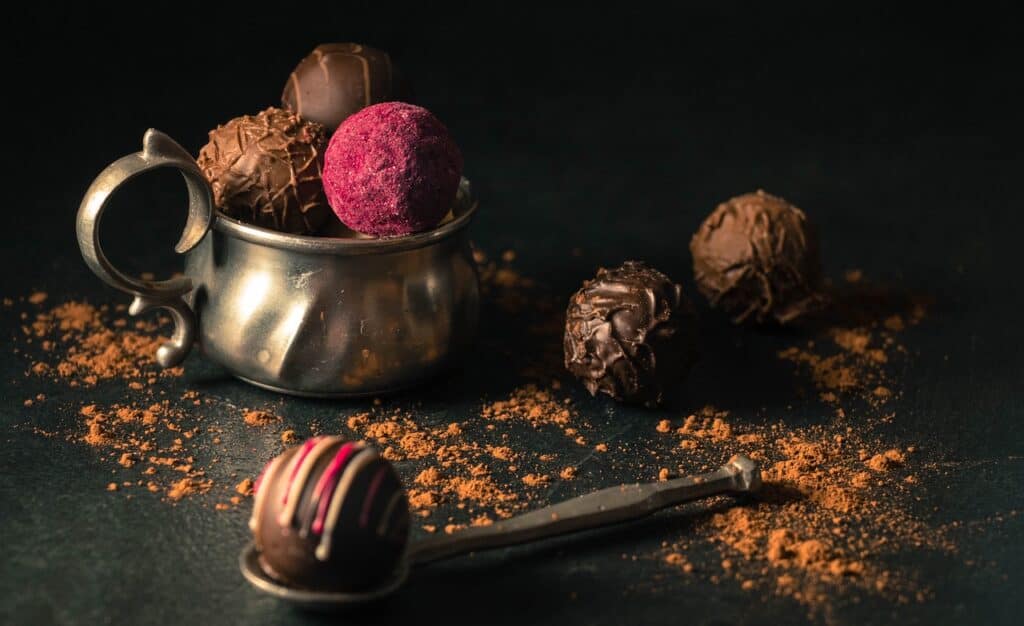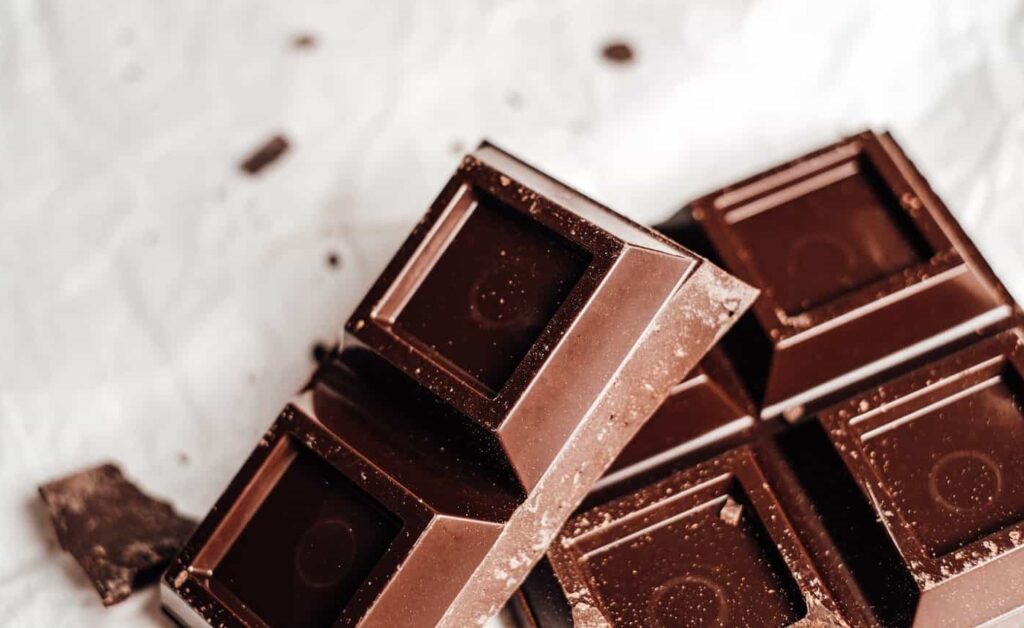“My father and mother had almost no time for me. I remembered that I was not needed by anyone, and all my life I doubted that it could be otherwise. Chocolate was my only love, and it never betrayed me.” – Audrey Hepburn

Chocolate. Silky, smooth, soothing, and delicious. Bitter and dark, sweet or made with milk. Truffles, tarts, cake, bars, candies, sauce, fondue, syrup, cookies, and the list goes on. Since at least 450 AD, people have consumed chocolate, and today the global chocolate industry is worth almost $128 billion dollars. Around the world, 7.5 million tons of chocolate were consumed in 2022, and the demand is growing. In the United States, 58 million pounds of chocolate are purchased during the week before Valentine’s Day each year, including about 36 million heart-shaped boxes of chocolate. This holiday celebrates love. And chocolate is a symbol of love.
The Theobroma cacao tree, which grows in the rainforests of South and Central America, produces cacao seed pods that yield beans from which chocolate is made. The cacao seed pods are cut open to expose the beans which are then fermented and dried in the sun for several days. In ancient days, after being ground into a paste containing cocoa butter and cocoa solids, the cacao was flavored with vanilla pods or chilies. Cacao was served as a bitter beverage and cacao beans were used as currency by Mayans and Aztecs. Hailed as the food of the gods, cacao was used in official religious ceremonies and festivals and for medicinal purposes. In the 1500s, Spanish conquistadors introduced cocoa to Europe, where it was drunk as a beverage. During the 1800s, cocoa powder and sugar were added to the cocoa paste to make solid chocolate. Today two-thirds of the world’s cocoa is produced in Western Africa.
In 1989, Jeremy Sherr conducted a proving of the best quality Belgian dark chocolate. The proving showed that a craving for chocolate is often linked to the menstrual cycle and to issues of nurturing and mothering. There can be irritability and an aversion to loved ones, or overprotectiveness. A lack of breastfeeding, affection, or nurturing in childhood can lead to a feeling of vulnerability, isolation, and fear of being watched. This can be expressed by a desire to be alone, to hibernate, or to hide under the covers for safety and warmth. In contrast, there can be a desire to be outside in nature, to be free and unrestricted. There can be either mental dullness and confusion, or restlessness, over-stimulation, and over-sensitivity. One interesting symptom is the desire to keep hair, including facial hair, short and bristly, reminiscent of a hedgehog. Chocolate is a chilly and dry remedy. Pains are sharp, prickly, and sticking. This remedy has an affinity to the circulatory system, the digestive system, and the endocrine system, which affects the menstrual cycle and sex hormones.
As a delicious treat, chocolate is loved by many. In some, the desire for chocolate can be an overpowering addiction. While homeopathic Chocolatum is a lesser known remedy, it can be helpful for those who, like Audrey Hepburn, felt a lack of parental affection and love as a child and found a substitute for that lack in chocolate.



